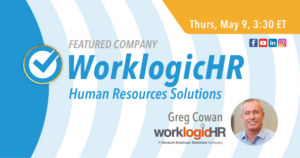It’s Not Just You: Hiring Headaches

We know… we said the “H” word. Don’t worry, we’re here to help you. We have been in high gear here at CEDR since the last installment of HR Tuesday. In addition to celebrating OM Appreciation Month and answering your pressing HR questions at the AADOM Conference in Scottsdale, our team appeared at seven separate conferences and presentations across the U.S. in September. At each of these different events, and especially the AADOM conference, we got the chance to speak with you on a one-on-one basis and from that obtained a really good idea of what you need from us to help your practice run more effectively. We decided to round up all your questions and put together an HR Crash Course, publishing a separate part each month for HR Tuesday. For the first part of this mini-course, we’re going to focus on the most requested topic: hiring.
Hiring is not inherently easy. We all know that, and we all have dealt with it first-hand. There are so many bumps and bruises along the way that can make it the last thing you want to deal with, which is tricky when your office is short-staffed and needs to hire new people quickly. However, there are ways to better equip yourself, so those roadblocks are less impactful and allow you to learn from them, improving your overall hiring process as time goes on. We want to remind you (even though we are certain you already know); this is a giant topic. We could go on for several pages and still not cover the entire spectrum of information that we have. This article, however, will help get you started on the journey with the tools and guidance you need to immediately start moving forward. For a more in-depth walkthrough, we have a free hiring guide…Click to learn more in a new window… that has helped thousands of practices move past issues and move toward reaching their recruitment goals.
Our Most Important Challenge for You – Inward Thinking
The main issue that we have identified that our members struggle with when it comes to hiring is the trap of being too outwardly focused. When it comes to creating your job ad and job descriptions. People tend to spend time focusing on what type of personality they want the candidate to have, what type of job experience, and other various candidate-focused “qualifiers”. However, we are going to challenge you to also look inward. Reflect on what the role you are filling entails, what you want your practice to look like in the future, what areas of opportunity you have within your current staff, and so on. Not only will this help you create a more defined idea of who you are looking for but hiring with this in mind will help you find the best possible candidates for the job; what we like to call Difference Makers…Click to learn more in a new window… here at CEDR.
Hiring employees is about more than just getting a warm body through the door – your goal with every hire you make should be to move through the process in a more effective, organized way than you did the last time and end up with someone great who stays longer. That’s why we say the least expensive, and least stressful hire you will ever encounter is the position you don’t have to fill over and over again. When you recalibrate your efforts to hire better, you’re paving the way to find someone who will elevate your team while also increasing your chances of retaining that awesome employee at the same time. Of course, working to consistently sharpen your hiring skills means committing to playing the “long game,” but it’s worth it.
A common trap people find themselves in is hiring for a want (someone you know you’d laugh a lot with on break) rather than a need (someone who will help elevate the practice). Think about it this way – if you hire people who are exactly like you, what happens? Building a team of like-minded individuals might amplify the collective talents shared by everyone on that team, but it also amplifies all your common weaknesses. Hiring difference makers require you to think carefully about what skill sets, perspectives, and strengths might be missing from your team to hire the people who will add to your overall success and help you expand your business. Cultural expansion can lead to greater innovation as well as the ability to reach new goals, and that means increased revenue and greater success. Plus, you want to avoid unintentional disparate impact…Click to learn more in a new window… (in other words, letting your implicit bias show through). The idea is to move away from looking for employees who might be a cultural fit, and, instead, start looking for those individuals who will be cultural adds.
Step One: Creating the Right Job Ad and Description
The job market is tough. There’s a lot of competition out there and, in recent years, the scales have tipped more and more in the applicants’ favor. This is why it’s more important than ever to create and post job ads that stand out to those future rockstar employees, leaving them no choice but to submit an application to your world-class business!
Every job ad you post should be built on the foundation of a well-written job description for a specific role. Whenever you sit down to write a job ad, it’s important that you take a look at the job description for that position and determine whether or not it needs to be updated first.
You should have a job description on file for every position in your office. These are position-specific documents, not person-specific, and they should go into more depth than your job ads about things like required experience and the credentials needed for the role. Your job descriptions should also outline the responsibilities and physical requirements for a position – such as bending and twisting, lifting up to 20 pounds, and sitting for long periods of time – and should state whether that position is exempt or non-exempt, part-time or full-time. You’ll want to provide your job description to each new hire as soon as they begin working for you and have them sign it to indicate that they understand what is expected of them in their role.
Look to your job descriptions as a guide for writing your job ads and as essential legal cover for your practice. Your job ads should describe what you are looking for in a short and succinct way, but should also let the candidate know what’s in it for them. The job ad is where you really want to sell the strengths of your business and show them you’re their best choice too– what makes you a standout employer? Why is your business the best place to work? What does the salary range look like and what benefits are provided that might entice a top-tier candidate to apply? And especially, how their skill set will make a difference every day. To see this guidance in action, check out the example job descriptions…Click to learn more in a new window… and job ads…Click to learn more in a new window… we have created.
Step 2: Elevating and Amplifying Your Interviews
When it comes to interviewing candidates, you’ll first want to make sure you’ve carefully reviewed each individual’s application materials and prepared some solid and specific questions you’d like to ask each one. A phone screen is a great first step to take before you start inviting applicants to face-to-face or video interviews.
Phone screen interviews are short – think 15 minutes. The goal of this initial introduction is to determine an applicant’s interest in the position, and their understanding of the role, and to get to know them a little better in order to see if you’d like to move forward with a formal interview.
If you have a good feel for a candidate after the phone screen, then it makes sense to invite the individual to your business for an in-person interview or to schedule a formal video interview. This is where “behavioral interview” questions will come in handy.
Behavioral interview questions require a candidate to draw on past experience to determine how they would perform in specific situations at your business. Behavioral interview questions also require in-depth responses and can’t be sufficiently addressed by a simple yes or no or in a matter of a few words.
Click here for more on behavioral interviewing…Click to learn more in a new window…, and a description of how to write your own behavioral interview questions…Click to learn more in a new window….
Finally, don’t forget to plan the interview agenda in advance, and to notify anyone who will need to meet with the candidate about their arrival. This isn’t just the candidate’s time to shine, but it’s also your opportunity to make a great first impression as an employer. If they are greeted by a person at the front desk who isn’t expecting a candidate to show up, it isn’t going to be an ideal introduction for your potential new employee. In the same vein, show up to the meeting with all of the documents you’ll need in hand, such as the applicant’s resume and any other notes you may have, and be sure to start and end the interview on time.
Stay Tuned…
In our next edition of HR Tuesday, we will be focusing on the next part of the hiring process: skills tests, offering the job, background tests, and onboarding. Because the need for a new hire can create a vacuum that tends to take most of your time and energy, it’s vital to ensure you work towards doing it in the most strategic way possible to ease the burden and get you the best candidates. And, as always, if you need any additional help, feel free to watch our most recent webinar on this topic…Click to learn more in a new window…. We hope you find this guide useful to help you start to move through the hiring process with more ease and intention.






